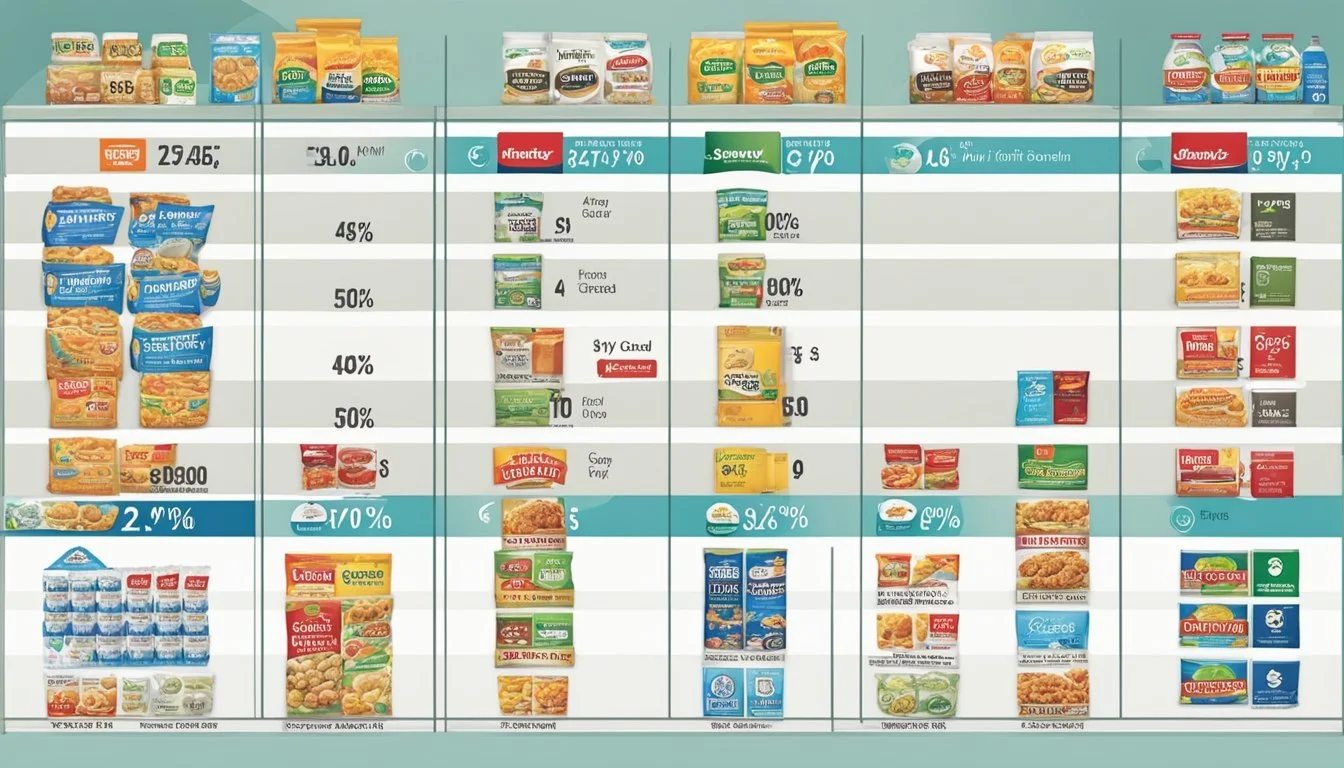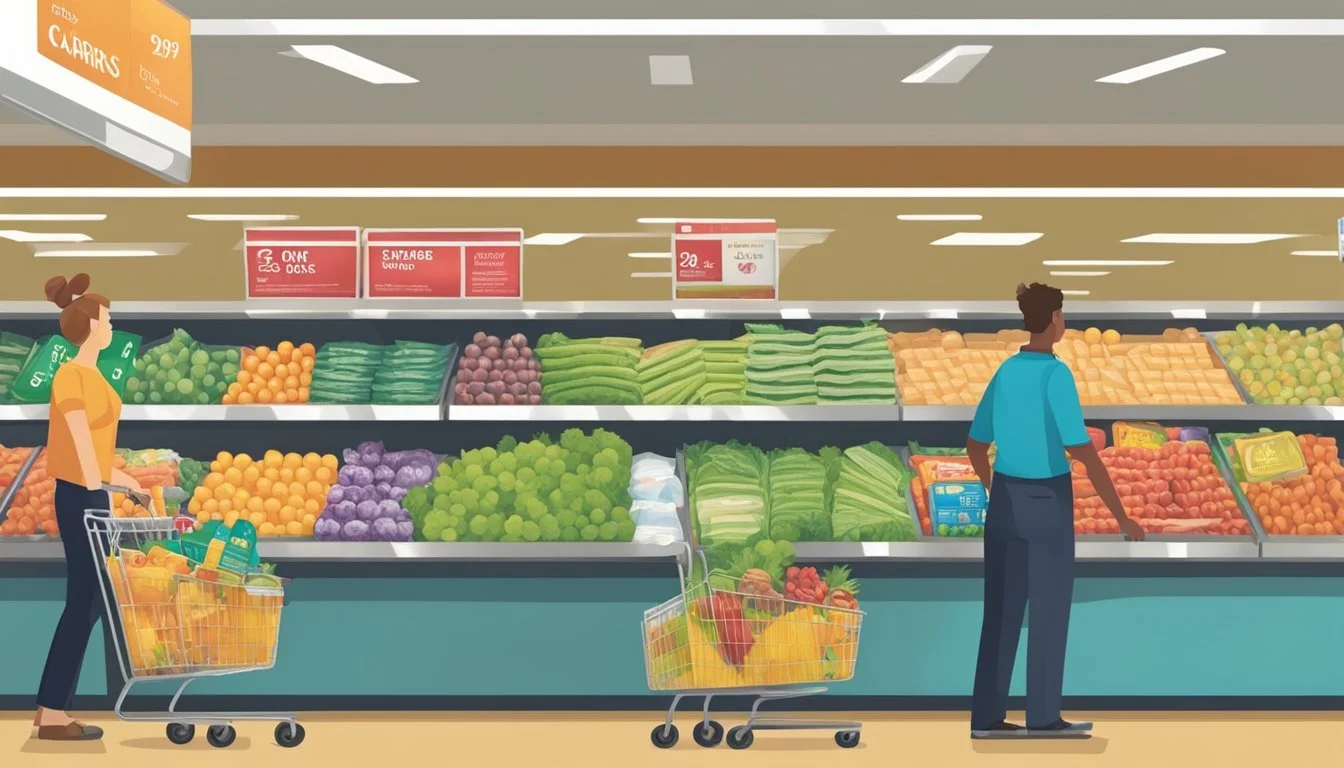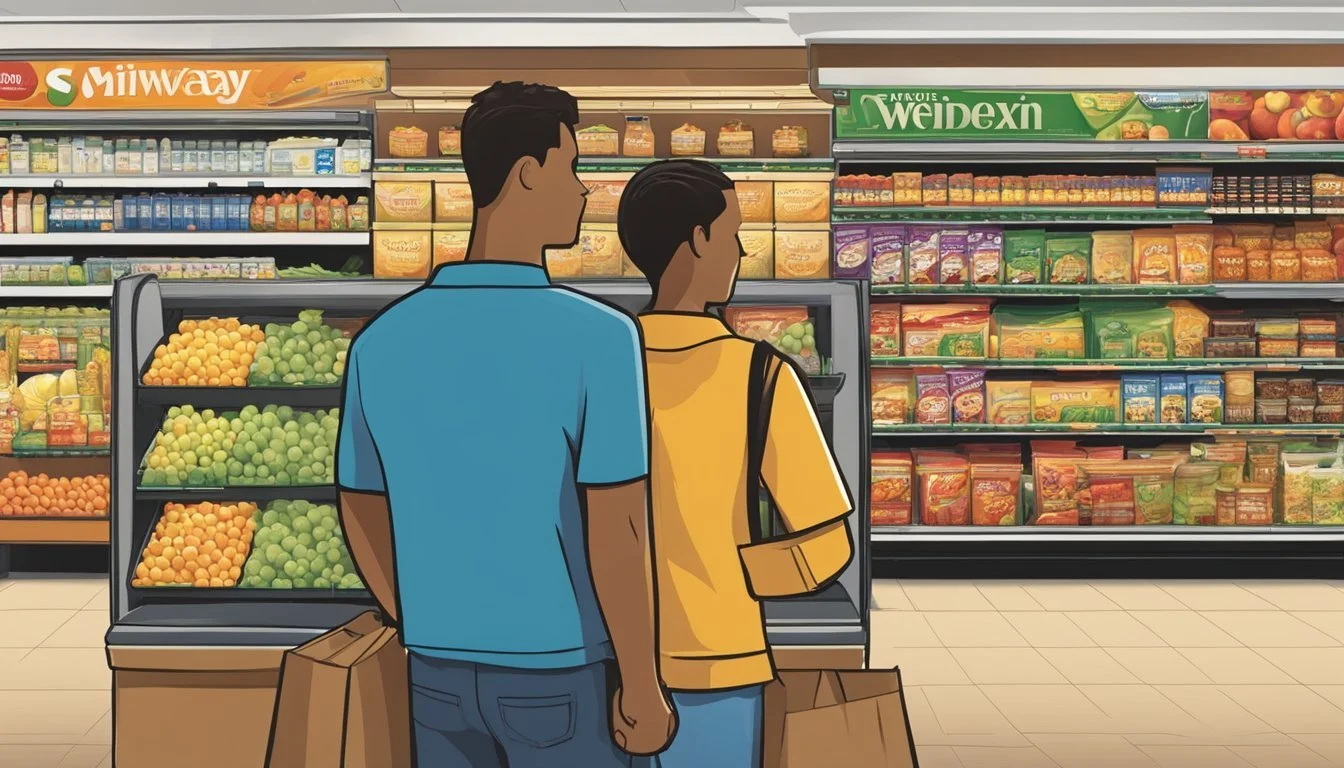Is Safeway Cheaper Than Winn-Dixie?
Comparing Grocery Pricing
Part of Our Grocery Store Guide with Details on Safeway Prices and Winn-Dixie Prices
When comparing grocery store prices, customers often wonder if regional differences affect the cost of their shopping lists. Two well-known grocery chains in the United States, Safeway and Winn-Dixie, operate in different regions and cater to distinct market demographics. Evaluating which is cheaper requires an analysis of various factors that influence retail pricing including location, product selection, and promotional strategies.
Safeway, with a significant presence in the western and central regions of the U.S., promises customers a variety of fresh goods, competitive prices, and a pleasant shopping experience which aim to provide value. On the other hand, Winn-Dixie operates predominantly in the southern states, boasting of localized offerings and cost-saving options. Price comparison in this context, especially for regular shoppers aiming to tighten their budget, is more than a cursory glance; it's a critical examination of the value both chains provide.
Customers deliberate on where to purchase their groceries based on a blend of cost-effectiveness and shopping convenience. The ultimate goal for many is to find a balance between reasonable pricing and high-quality products. While Winn-Dixie is perceived as being reasonably cheaper by some, particularly with its private label offerings, the comparison with Safeway's pricing structure is not always straightforward due to regional pricing strategies and the stores' varying selections of goods and discounts.
Understanding Grocery Store Pricing
When consumers enter a supermarket like Safeway or Winn-Dixie, they are met with a plethora of prices that may vary significantly from one store to another. Price is a fundamental factor affecting a shopper's decision on where to purchase their groceries. Each supermarket employs different strategies to position itself in the market, which often reflects in their pricing.
Discounts and digital coupons are modern tactics stores use to attract budget-conscious customers. Safeway, for example, offers a range of digital coupons through its Just for U program, potentially leading to substantial savings on the total grocery bill.
On the contrary, stores may also offer loyalty programs that provide savings over time or discounts on specific items. In contrast, Winn-Dixie's SE Grocers rewards program allows shoppers to earn points during each visit which can be redeemed for savings on groceries or fuel.
Here is how a shopper might experience pricing at these stores:
Base prices for products may be set differently.
Savings can be had through in-store promotions.
Exclusive member prices or coupons further reduce costs.
It is critical for consumers to compare the prices of individual items and also consider the overall potential savings through available offers. The efficient use of coupons and taking advantage of ongoing promotions can stretch one's money and have a significant impact on the budget.
Understanding the dynamics of supermarket pricing and the use of strategic shopping can lead to better financial decisions. Whether it's Safeway or Winn-Dixie, customers equipped with this knowledge can navigate through the complexities of pricing and ensure they get the most value for their money.
Comparative Analysis of Safeway and Winn-Dixie
In assessing the relative value of shopping at Safeway versus Winn-Dixie, this analysis considers three critical aspects: pricing structures, product quality, and available saving programs.
Price Points Across Various Departments
Safeway often positions itself as a premium grocery option and its prices across meat, produce, and dairy departments can reflect that positioning. In contrast, Winn-Dixie is frequently associated with more competitive pricing, making it a more budget-friendly option for the same categories. For instance, a comparison might reveal that Winn-Dixie's store brands are priced lower than Safeway's counterparts, providing economical alternatives to national brands.
Meat: Safeway may offer a wider selection, but Winn-Dixie typically has lower base prices.
Produce: Comparable quality with potential price advantages at Winn-Dixie.
Dairy: Winn-Dixie's store brands like SE Grocers can offer significant savings over Safeway's selections.
Quality of Goods and Brand Varieties
Both grocers maintain high standards for their offerings, but they cater to different market segments. Safeway often carries a broader array of national brands and organic options, positioning itself as a grocer with a focus on quality and variety. Winn-Dixie, while it does offer a selection of national and local brands, might prioritize more cost-effective solutions without compromising on quality. It's noted for matching the taste and quality of national brands with its own lines, such as SE Grocers, often at a lower cost.
Customer Loyalty Programs and Discounts
Loyalty programs are pivotal in enhancing customer savings. Safeway's Just for U program provides personalized deals and discounts on frequently purchased items. Winn-Dixie's loyalty program, on the other hand, emphasizes immediate markdowns on a variety of products. They both offer deals and discounts that appeal to different shopper needs, with Winn-Dixie often focusing on streamlined savings through its loyalty program.
Shopping Experience and Convenience
When comparing Safeway and Winn-Dixie, consumers often look at both the ease of access and the quality of the shopping experience. These factors heavily influence their choice of grocery shop.
Store Locations and Accessibility
Safeway operates a significant number of stores across the United States, with a strong presence on the West Coast. They are known for their strategic location choices, ensuring convenience to a wide array of customers seeking proximity to a local grocery store.
Winn-Dixie, primarily situated in the Southeast U.S., focuses its locations to cater to the regional consumer base. Potential customers will find varying levels of accessibility based on their geographic location when comparing the two.
Service and Store Atmosphere
Safeway is reputed for providing a pleasant shopping environment with an emphasis on high-quality service, clean aisles, and an inviting atmosphere. Customers can expect well-organized shelves and helpful staff which contributes to a stress-free shopping experience.
Winn-Dixie also values service, maintaining a friendly atmosphere in their stores. However, the ambiance and service level may vary from one location to another, which is worth noting for consumers who prioritize consistent shopping experiences.
Online Shopping and Digital Integration
Safeway has made significant investments in their digital shopping platform, allowing for a streamlined online shopping experience with options for delivery or curbside pickup. A user-friendly website and mobile app facilitate easy navigation and order placement.
Winn-Dixie has developed its digital presence as well, offering similar services to meet the demands of consumers preferring to shop online. The store's digital integration continues to evolve, aiming to provide a comparable level of convenience offered by competitors like Safeway.
Broader Market Context
In examining the pricing between Safeway and Winn-Dixie, it's essential to consider their position within the larger grocery market landscape, which includes both traditional grocers and rising retail giants who have powerful e-commerce platforms.
Comparison to Other Major Grocers
Walmart clearly leads the pack in price competitiveness, offering savings of approximately 29% over Winn-Dixie for identical items. Similarly, Aldi and Market Basket are known for their cost efficiency, often undercutting the prices of more traditional grocery chains. Publix and Safeway, while offering a pleasant shopping experience, tend to have prices that are marginally higher than discount grocers but competitive within their market segments. Kroger maintains a balance between quality and affordability, making it a formidable competitor.
Target has positioned itself closely with grocers like Winn-Dixie, occasionally having higher prices, but offers value through convenience and store brand products. Basic items such as white sandwich bread are typically found for less at discount retailers like Aldi or Walmart, highlighting the price variance within the category. Specialty retailers such as Trader Joe's and Wegmans offer a curated selection and while not the cheapest, they cultivate loyalty through quality and unique product offerings.
Impact of Retail Giants and E-commerce
The rise of retail giants like Costco, Sam's Club, and Amazon has reshaped the grocery market. Costco and Sam's Club, leveraging their membership model, often offer bulk goods at lower unit prices. Amazon, with its acquisition of Whole Foods Market and expansion of Amazon Fresh, has brought the convenience of online shopping and competitive pricing to the grocery segment, forcing other retailers to invest in their online platforms.
Amazon's entry into the market also put pressure on conventional grocery chains to enhance their digital footprint, with many now offering online ordering with curbside pickup or home delivery options. This integration of e-commerce has become a cornerstone for modern retailers aiming to maintain market share in a highly competitive environment.
Retailers across the board have recognized the value of having a strong online presence, not only to compete with Amazon but also to cater to the evolving expectations of consumers, making e-commerce an indispensable component of the contemporary grocery shopping experience.
Consumer Behavior and Trends
When comparing the pricing strategies of Safeway and Winn-Dixie, the consumer behavior and trends provide crucial insights. Customers are increasingly prioritizing cost-effective shopping while maintaining a focus on health and quality.
The Role of Organic and Health Food Options
Safeway has invested considerably in its organic and health food options, featuring a wide variety of organic produce under its private label, O Organics. These product lines appeal to health-conscious consumers who are willing to pay a premium for organic and whole foods. By contrast, Winn-Dixie offers a more limited selection of organic items, focusing on affordability.
Store Organic Offering Price Point Consumer Appeal Safeway Extensive Higher Health-conscious shoppers Winn-Dixie Limited More Affordable Budget-focused customers
The Effect of Consumer Ratings and Reviews
Consumer ratings and reviews play a significant role in guiding shoppers' decisions. Safeway's strategy seems to resonate with a target audience that values a balance between cost and nutritional quality, which often reflects in higher consumer scores. Winn-Dixie, however, may attract cost-driven shoppers because of its competitive pricing, which is important in times of economic pressure.
Safeway's average consumer rating: 4.1/5
Winn-Dixie's average consumer rating: 4.0/5
Surveys and consumer feedback suggest that both stores have their own loyal customer bases, created through distinct retail strategies—Safeway with an emphasis on quality and organic options, and Winn-Dixie with a focus on economy.
Final Considerations
When deciding between Safeway and Winn-Dixie, shoppers should examine both the cost-effectiveness and the shopping experience. Using this lens, the following considerations can guide consumers to make informed decisions.
Making the Most of Your Grocery Budget
Consumers seek overall value when it comes to groceries, often looking for the store that allows their budget to stretch further. Safeway and Winn-Dixie both offer weekly specials and loyalty programs, which can result in tangible savings. While Safeway may offer a diverse array of goods that appeal to shoppers, Winn-Dixie might present lower base prices on a variety of items. It's important for shoppers to compare prices on staple items and consider the frequency and value of sales promotions each store provides. Use tools like:
Store flyers
Price comparison apps
Loyalty and rewards programs
Choosing the Right Store for Your Needs
Convenience can be as significant as price for many shoppers. If a store's location saves time, this is an important factor in the decision-making process. Moreover, product variety can be a decisive factor; one store may offer a wider selection or specialty items that are aligned with a consumer's dietary preferences or needs. When analyzing Safeway versus Winn-Dixie, customers shouldn't only focus on which is cheaper but also on:
Store proximity and convenience
The variety of products available
Store brand quality
The shopping environment
Consumers should consider both the economic aspects and the experiential facets of their grocery shopping to choose the right store that fulfills their unique requirements.Is Albertsons Cheaper Than Safeway?






